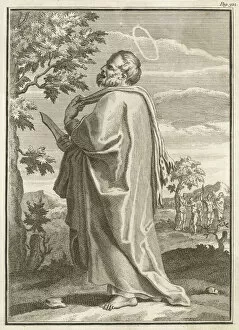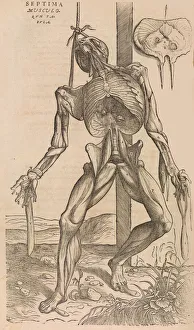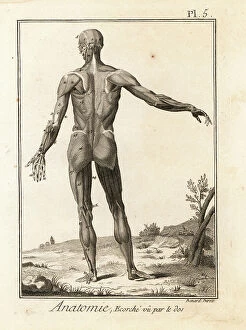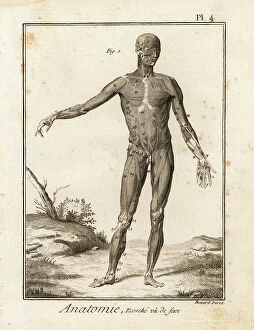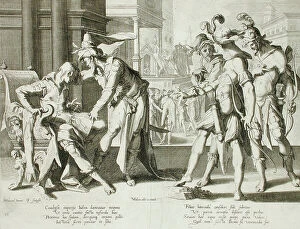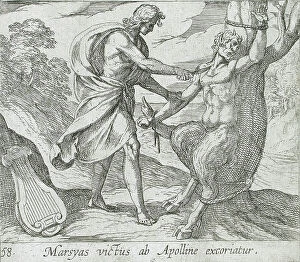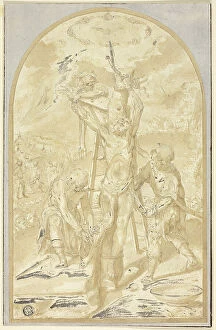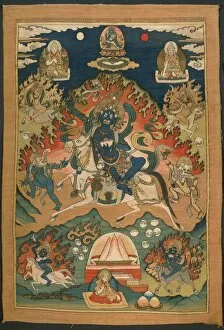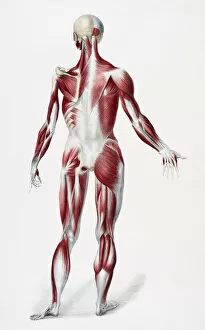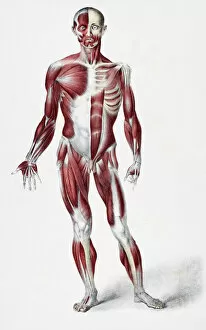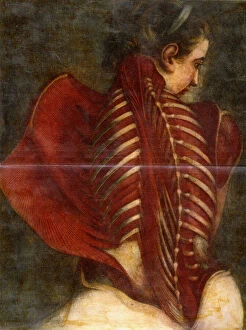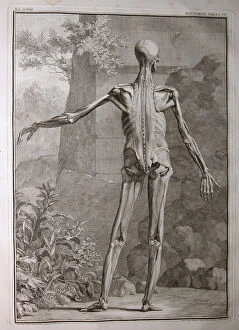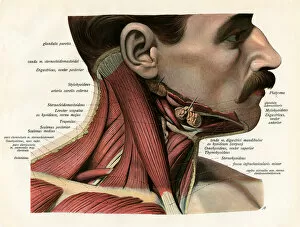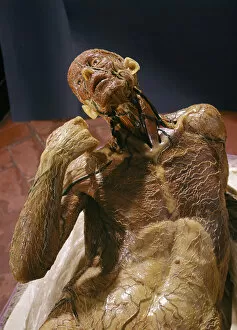Flayed Collection
"Unveiling the Flayed: A Glimpse into the Artistic Depictions of Skin Removal" Intriguing and macabre, the theme of flaying has captivated artists throughout history
All Professionally Made to Order for Quick Shipping
"Unveiling the Flayed: A Glimpse into the Artistic Depictions of Skin Removal" Intriguing and macabre, the theme of flaying has captivated artists throughout history. From ancient tales to religious iconography, this gruesome practice has left its mark on various masterpieces. One such depiction can be found in "St Bartholomew Flayed, " sculpted by Marco d Agrate in 1562. This haunting artwork portrays St Bartholomew, one of the twelve apostles, holding his own flayed skin as a symbol of martyrdom and devotion. The fascination with flaying extends beyond religious narratives. In Andreas Vesalius' groundbreaking anatomical work "De humani corporis fabrica (Of the Structure of the Human Body)" from 1555, detailed illustrations showcase dissections revealing muscles and organs beneath layers of skin. These images provide a glimpse into the scientific exploration of human anatomy during that era. Moving forward in time, we encounter Jusepe de Ribera's painting "Apollo and Marsyas" from 1637. Inspired by Greek mythology, it depicts Apollo flaying Marsyas alive as punishment for challenging him musically. The artist skillfully captures both agony and triumph through vivid brushstrokes. Peter Paul Rubens also delves into this mythological tale with his rendition titled "Apollo and Marsyas. " Created in the 17th century, Rubens emphasizes texture and movement to convey Marsyas' suffering at Apollo's hands. Delving deeper into antiquity, we discover a marble statue depicting Marsyas himself. This sculpture stands as a testament to ancient artistry while immortalizing this tragic figure forever frozen in stone. Furthermore, Hieronymus Bosch's oil painting "Detail of the Flaying of Sisamnes" transports us back to medieval times where cruelty was often depicted for moral instruction or shock value.

